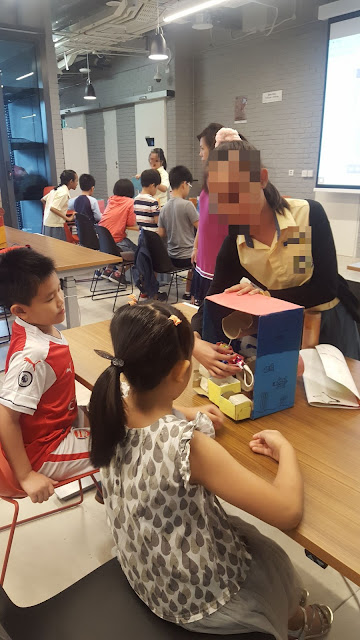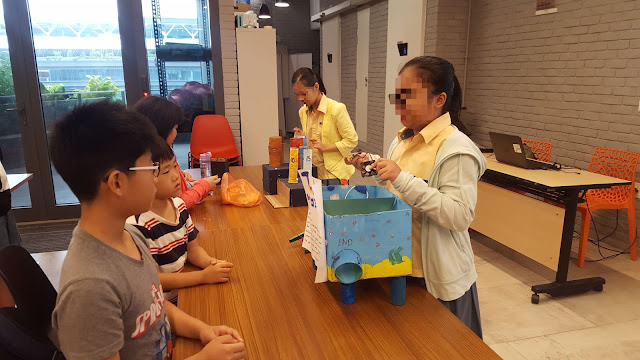Sharpening my pottery skills with two other teachers in school every Friday afternoon. We even had a lesson with a Ceramist, Mr Chua, in his studio. Soon, we'll be able to fire our students' work on our own.
While I have taken ceramics classes before and the procedural steps are similar, what was missing in my previous experience is that the teachers aren't glaze chemist or connoisseur. However, with more learning in theoretical areas such as explanation in Chemistry and listening to someone learned in terms of depth and breadth is few. As a teacher to younger charges, the teacher has to always be the one adapting to the learners whereas, for adult learners, we are the ones adapting to our teachers, be it in communication or mannerism. I could still produce decent pieces despite the different instructions. I know given time, resources and a will to do better, we can improve our skills. So, when Mr Chua leaves, we would be fending for ourselves but I know he will only be a phone call away! :D
Careful attachment of different parts of a cup or motifs in a piece is crucial, otherwise, this initial step would lead to wasted effort and time in the end.
Trimming is essential in making pots. It removes excess clay and unnecessary weight in a piece. It also smoothens the surface evenly quite quickly. Usually done when the clay is leather hard, a term used to describe clay that has some moisture but not too wet or dry for this step. The removed clay are noodle-like and I don't have to exert too much pressure. But when it is bone dry, the removed clay would be powder-like and brittle.
Before you judge us for this abused kiln shelf, our role now is more of a custodian for these properties. We learnt to use batt wash to protect this shelf and to prevent further degeneration. Troubleshooting is one of the things high on my list. We can do everything as we were taught but certain circumstances would require one's thinking to be out of the box. For example, teaching children and adults are vastly different. The characters with whom we are interacting every day have different learning needs. Much more if they require special attention. We need to think of the learners' movement and placement of supplies. We need to place the materials in accessible places and delegate roles to the children so that they can take some responsibilities for their learning. Throughout the learning, there are bound to be teachable moments, peer feedback and exploration. These implicit or hidden curricula are often unsaid or hardly replicated by others.
 |
| Photo credit: Aznani |





































